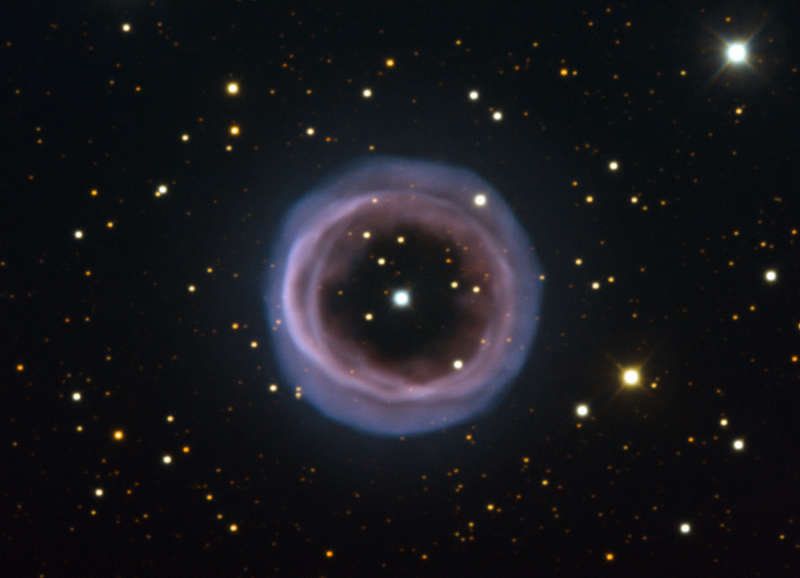
|
Credit & Copyright: ESO
Explanation:
What happens when a star runs out of
nuclear fuel?
For stars about the mass of our Sun, the center condenses into a
white dwarf
while the outer atmospheric layers are
expelled into space and appear as a
planetary nebula.
This particular
planetary nebula,
pictured above and designated
Shapley 1 after the famous astronomer
Harlow Shapley, has a very apparent annular ring
like structure.
Although some of
these nebulas
appear like planets on the sky
(hence their name), they actually surround stars far outside
our Solar System.
|
January February March April May June July August September October November December |
| ||||||||||||||||||||||||||||||||||||||||||||||||
NASA Web Site Statements, Warnings, and Disclaimers
NASA Official: Jay Norris. Specific rights apply.
A service of: LHEA at NASA / GSFC
& Michigan Tech. U.
Based on Astronomy Picture
Of the Day
Publications with keywords: Shapley 1 - planetary nebula - ring
Publications with words: Shapley 1 - planetary nebula - ring
See also:
- APOD: 2025 August 31 Á NGC 7027: The Pillow Planetary Nebula
- APOD: 2025 August 22 Á A Tale of Two Nebulae
- APOD: 2025 August 5 Á NGC 6072: A Complex Planetary Nebula from Webb
- APOD: 2025 July 29 Á A Helix Nebula Deep Field
- APOD: 2025 July 13 Á Planetary Nebula Mz3: The Ant Nebula
- APOD: 2025 June 9 Á Between Scylla and Charybdis: A Double Cosmic Discovery
- APOD: 2025 May 14 Á NGC 1360: The Robins Egg Nebula
